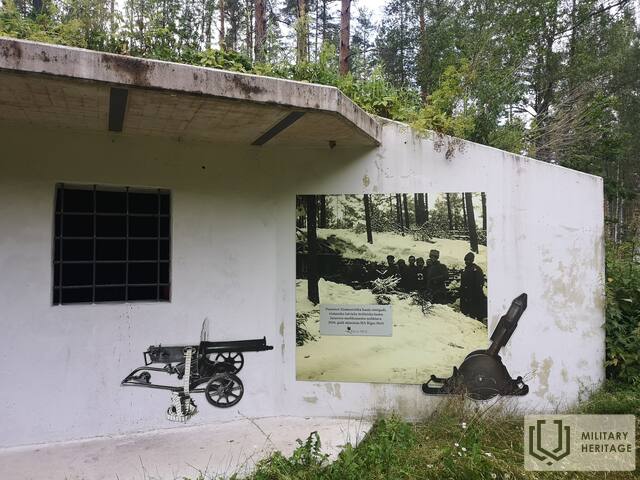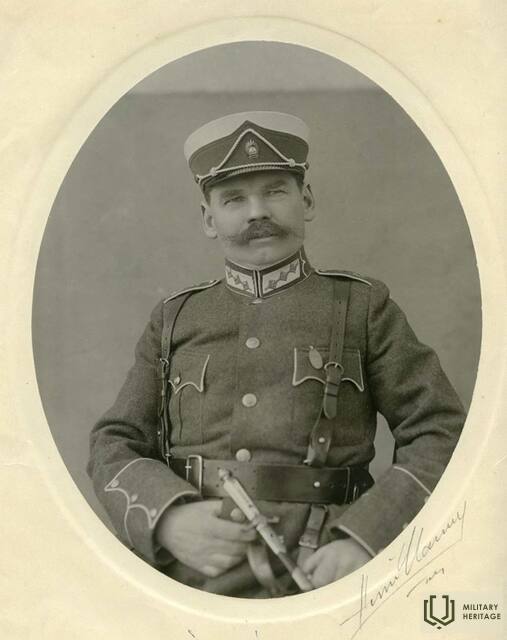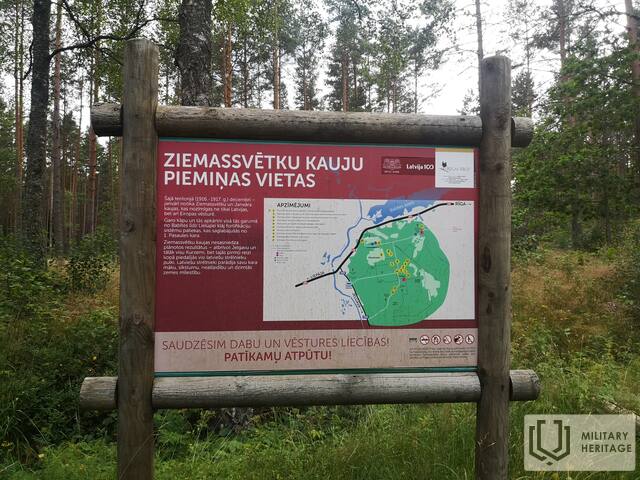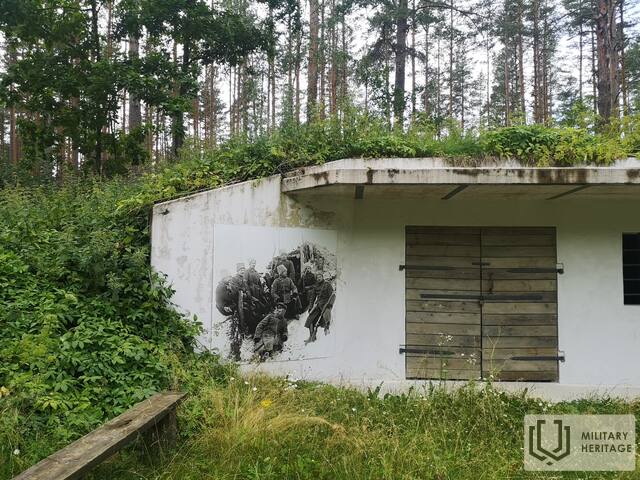Latvian soldiers’ former medical warehouse
Infrastructure

Located in Babīte district, near the Antiņi soldiers' cemetery and the renovated trenches.
During World War I, the defensive positions of the Russian Empire's army were located in this area from 1915. In 1917, during the Christmas battles, the headquarters of the 5th Zemgale Latvian Rifle Regiment and a hospital with a medicine warehouse were located near the Antiņi house, which was headed by the prominent Latvian military doctor Pēteris Snīķeris.
During the Christmas battles, Latvian riflemen attacked German army units in particularly harsh and unfavorable conditions. The injuries sustained in the battles were of various kinds - gunshot wounds, contusions and traumas, as well as frostbite. Timely medical assistance had to be provided to thousands of Latvian soldiers. It was organized so that the wounded could receive care as quickly as possible. Unarmed paramedics operated on the battlefield, providing first aid and taking the wounded out of dangerous places. Dressing points were set up near the battlefields, where care was continued and triage was carried out. More seriously wounded soldiers were evacuated to infirmaries or hospitals by carts and cars. Cemeteries were established near the infirmaries, where those who died from injuries were buried.
Today, you can visit the old medicine warehouse. Nearby is the Antiņi soldiers' cemetery, as well as reconstructed World War I trenches and dugouts. The environment is suitable for walks in the forest, revealing vivid evidence of military heritage.
Used sources and references:
Bērziņš, V. Latvian Riflemen: Drama and Tradition. Riga: Latvian History Institute Publishing House, 1995.
Lismanis, J. In memory of battles and fallen soldiers: 1915-1920. Riga: Nims, 1999.
Related timeline
Related stories
About Christmas battles
The Christmas Battles ended on January 11. The Latvian riflemen managed to capture the heavily fortified German army position - Ložmetējkalnu - on the third day of the battle. The price of the Christmas Battles was very high. Hundreds of Latvian and other Russian army soldiers had lost their lives trying to knock the Germans out of their positions. The narrator vividly describes the scenes on the battlefield after the end of the Christmas Battles.



















